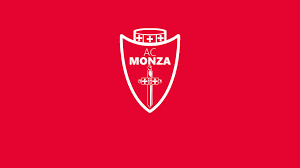Vale Park is more than just a football stadium; it stands as a testament to the rich history and culture of the sport in England. Nestled in Burslem, Stoke-on-Trent, Vale Park has been home to Port Vale Football Club since its establishment in 1913. Over the decades, this iconic venue has witnessed countless memorable matches, celebrated players, and passionate fans, making it an integral part of British football 98win gallery
Introduction to Vale Park
Vale Park’s significance extends far beyond its physical structure. The stadium is an embodiment of the community spirit surrounding Port Vale Football Club, which has thrived through triumphs and adversities alike. From its initial construction to present day, Vale Park has been a focal point in Burslem, drawing together generations of supporters and creating an indelible mark on the local and national football landscape.
As we delve into the intricacies of Vale Park, we will explore its historical context, architectural features, cultural importance, and future prospects. This comprehensive examination aims to highlight why Vale Park remains a cherished landmark not only for Port Vale FC but also for football enthusiasts across the world.

The History of Vale Park
The journey of Vale Park began in the early 20th century, when the need for a dedicated football ground became apparent as Port Vale FC sought to establish itself firmly in the English Football League system. The site chosen for the stadium was situated on land that once belonged to the Burslem Working Men’s Club. The vision was clear: to create a modern facility that could accommodate the growing fanbase and provide a venue worthy of competitive football.
When Vale Park officially opened its doors in 1950, it represented a new era for the club. The stadium initially had a modest capacity, but it was designed with future expansion in mind. The first official match at Vale Park took place against Accrington Stanley, marking the beginning of a long-standing relationship between the stadium and the club’s devoted supporters.
Over the years, Vale Park has undergone various transformations, reflecting the evolving nature of football and the demands of the modern game. In the face of challenges, including financial difficulties and changes in ownership, Vale Park has remained resilient, adapting to the needs of both the club and the community it serves.
Early Beginnings
The inception of Vale Park can be traced back to the post-World War II era. Amidst the backdrop of recovery, there was an urgent need for a venue that could accommodate the burgeoning interest in football following the war. This period saw a significant cultural shift, where football emerged as a vital form of entertainment and social connection for communities.
The decision to move from the club’s previous ground, Old Recreation Ground, was met with enthusiasm among fans eager for a fresh start. The infrastructure was built rapidly, showcasing a blend of practicality and ambition. Architects aimed to create a stadium that not only housed games but also fostered a sense of unity and pride within the local area.
Growth and Development
As the years progressed, Vale Park began to reflect the changing demands of the game and its supporters. The stadium underwent several key developments, starting with the installation of floodlights in the late 1950s, allowing night matches to become a reality. This innovation significantly increased attendance and transformed the atmosphere within the stadium.
The 1990s brought about further advancements, including the construction of the Lorne Street Stand and the expansion of the existing facilities. These enhancements marked a turning point in the stadium’s history, underscoring the club’s commitment to providing a more comfortable and engaging experience for fans.
Conclusion
Vale Park calls to mind a myriad of emotions, memories, and stories, all intricately woven into the fabric of football culture. The stadium’s rich history, architectural features, and cultural significance underscore its importance not only to Port Vale FC but also to the wider community and the sport itself.
From its humble beginnings to its evolution as a modern venue, Vale Park has stood the test of time, adapting to changing circumstances while remaining true to its roots. It is a sanctuary for supporters, a cradle of talent, and a symbol of resilience amidst the challenges faced by football clubs today.





